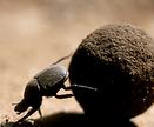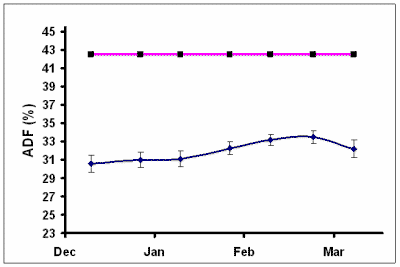

To send a message to an author, click on the author's name at the end of the article.
This Month in Ag Connection | Ag Connection - Other Issues Online
Many farmers only hire part-time employees or hire help for special projects. Keeping current on the labor tax regulations can be especially difficult for these farmers. As a general rule, Social Security and Medicare must be withheld and matched on wages paid to employees of your business. Additionally, wages subject to Social Security and Medicare taxes are also subject to income tax withholding. Here are some of the basic rules for farm labor taxes.
The $150 or the $2,500 Test:
Wages paid during the year for farm work are subject to Social Security and Medicare
taxes and income tax withholding
if either of the following two tests is met:
Wages Paid-in-Kind:
Commodity wages are not considered cash wages and are therefore not subject to Social
Security and Medicare taxes or income tax withholding. Several i's must be
dotted and t's crossed in order to insure commodity wages are not
reclassified by the IRS as cash wages. Work with a tax specialist if you
desire to utilize commodity wages in your employees' compensation package.
Employment of Family Members:
Wages paid to your children under age 18 are exempt from income tax withholding,
Social Security and Medicare taxes. If your child becomes 18 during the
year, wages paid following that date are not exempt. Wages paid to your
children are included in calculating the $2,500 test.
Compensation paid to your parents is exempt from income tax withholding, Social Security and Medicare taxes, if the work:
Payment of Labor Taxes:
Labor taxes need to be deposited monthly or semiweekly. If your total labor tax for
2003 (the lookback period for 2005) was less than $50,000 - you should
deposit your labor taxes monthly. However, if you are sure your 2005 labor
taxes will be less than $2,500 - you are not required to make deposits and
can send your total labor tax payment with Form 943 "Employer's Annual Tax
Return for Agricultural Employees".
As an agricultural employer you need to have a basic understanding of the labor tax regulations. Withholding labor taxes correct is the best policy for you and your employees. Explaining the reason for corrective withholdings later in the year can be embarrassing for you and might create financial concerns for your employees.
Source: IRS Circular A, "Agricultural Employer's Tax Guide"
This publication is available online at:
http://www.irs.ustreas.gov/pub/irs-pdf/p51.pdf
(Author: Parman R. Green, MU Extension Ag Business Mgmt. Specialist)
This Month in Ag Connection | Ag Connection - Other Issues Online
When listing beneficial insects, dung beetles or tumblebugs would not make most people's long list. This is unfortunate since dung beetles can have a significant positive impact. It has to be from their habit of literally diving in and savoring something we try to stay as far from as possible.

The diet of both adult and larval dung beetles consists mostly of manure. Although, all manures are "ripe" for dung beetle activity, those from large plant eaters, like cattle, seem to be preferred. Where dung beetles are numerous and active, manure pats from cattle rarely last more than 24 to 36 hours. On an Oklahoma ranch it was estimated dung beetles following the herd buried a ton of wet manure per acre per day and remove 90% of the surface material.
Most of us think of the rollers. Dung beetles using balls of manure rolled away from the pat are actually the minority. Tunneling beetles make up the greater percent of species. They dive in and make tunnels under the manure pat where one to several manure balls are placed from an inch or two below the soil surface to several feet down.
The benefits of dung beetles include:
The potential economic benefits that could be derived from rapid burial of livestock feces by dung beetles could be considerable. This can include increased grazing, more efficient nitrogen recycling, reduced parasitism, and reduced fly pests.
Other benefits include:
Dung beetle larvae are susceptible to some insecticides used for fly and internal parasite control for cattle. Ivermectin injectable, used at the recommended dose, reduced survival for 1 to 2 weeks. Ivermectin pour-on reduced survival of the larvae for 1 to 3 weeks. Most detrimental was Ivermectin administered as a bolus, with effects lasting up to 20 weeks. In contrast, moxidectin is less toxic to dung beetles and did not reduce dung beetle survival. Occasionally, horn fly and/or face fly pressure on the cattle will require treatment to provide relief to the cattle, so some impact on dung beetle populations may be unavoidable.
Backrubbers, ear tags, and the use of insecticide dusts and sprays only when needed are alternatives having little or no effect on dung beetles. Another option is to treat cattle during the coolest months of the year, as the beetles and larvae are inactive at those times.
Controlled grazing systems increase dung beetle populations and varieties by concentrating the manure in smaller areas, thus reducing the time beetles must spend in search of food. Also, manage pastures to improve dung quality. If pastures are productive with high quality forage, it will enhance dung beetle populations from better quality manure.
(Author: Jim Jarman, Agronomy Specialist)
This Month in Ag Connection | Ag Connection - Other Issues Online
Certified Private Pesticide Applicators have asked if there is a crunch with soybean rust (SBR), can they legally spray fields of others. These applicators are worried about neighbors who may not be able to get commercial applicators to apply SBR fungicides in a timely manner.
The Missouri's pesticide use regulations say private pesticide applicators can not take money or any legal tender for applying pesticides on the lands of another. This includes commodities that can be turned directly into cash. Only services can be traded for pesticide applications. To make sure the regulations are not broken, a private applicator can call the Missouri Department of Agriculture, (573) 751-2462, to ask for a clarification for specific situations.
(Author: Jim Jarman, Agronomy Specialist)
This Month in Ag Connection | Ag Connection - Other Issues Online
This seems like a strange time to be talking about winter grazing, but developing winter grazing programs takes time and planning. Stockpiled pastures can provide very high quality feed late into the fall and early winter. In fact, I have collected some non-grazed stockpiled fescue forage in mid-January at the University of Missouri Thompson Farm near Spickard that tested 17 percent crude protein and 57 percent TDN.
In addition to the high quality, it is also much less expensive to have cattle grazing compared to hauling them hay. Typical costs for grazing stockpiled fescue range from 25 to 35 cents per head per day. Typical costs for hay feeding run upwards of 75 cents per head per day, depending upon the amount and type of supplement needed.
Stockpiling systems require the removal of spring growth, either by hay harvest or grazing. This should be accomplished by late July or early August and prior to nitrogen fertilization. In a newsletter, Jim Gerrish, formerly of the Forage Systems Research Center at Linneus, MO makes the following additional key points for successful stockpiling.
Research done at FSRC and the fall grazing demonstrations I did at the Thompson Farm near Spickard show definite advantages to some type of strip-grazing program. Maximum forage allocations should be a week or less, depending on your situation and goals. Restricted access provides higher forage utilization, more even nutrient intake by the livestock and extends the grazing period of the fall stockpile without sacrificing animal performance.
Restricting animal access is easily accomplished with temporary electric fencing materials. Begin by fencing close to the water source and moving the fence out from there. Since we are not concerned with regrowth at this time of year, no back-fence is required to keep animals off previously grazed areas. These fences can be easily and quickly moved once or twice a week and no machinery is required.
Recent research has shown ergovaline concentrations in stockpiled tall fescue declined over time, see Figure 1. Forage quality declined slightly over time, but the benefit of lower ergovaline levels appears to offset this decline in forage quality. Stockpiled tall fescue still has, on average, higher energy and protein levels than fescue hay, see Figure 2.


If you're looking at reducing winter feeding costs, begin planning now for utilizing stockpiled forages. I'm confident you'll like the results.
(Author: Gene Schmitz, Livestock Specialist)
This Month in Ag Connection | Ag Connection - Other Issues Online
There have been no reported cases of WNV in horses in Missouri in 2005, to date. We feel that it is likely that this year will be similar to 2004, in which very few equine cases of WNV were reported for Missouri. The decreased incidence of WNV in our horses is likely attributable to either the acquisition of general immunity in the horse population through natural exposure or the widespread use of vaccines against WNV (or a combination of both).
Veterinarians at the University of Missouri recommend that horses be vaccinated on a regular and appropriate basis by veterinarians and that a "booster" vaccine should be administered to previously-vaccinated horses ahead of the WNV "season" (typically June through October). For best results, a vaccinal booster should be given in Mid-May. If a booster was not administered earlier this year, it can still be given to provide some protection for the remainder of the season.
UMC diagnosticians will continue to monitor for new cases of WNV in horses. Anyone can follow the progress of this disease throughout the United States (on a county-by-county basis) by visiting the following website: http://diseasemaps.usgs.gov/
(Author: Philip J. Johnson, Professor and Instructional Leader, Equine Internal Medicine, UMC)
This Month in Ag Connection | Ag Connection - Other Issues Online
Publishing Information
Ag Connection is published monthly for Northeast and Central areas of Missouri producers and is supported by the University of Missouri Extension, the Missouri Agricultural Experiment Station, and the MU College of Agriculture, Food and Natural Resources. Managing Editor: Mary Sobba.